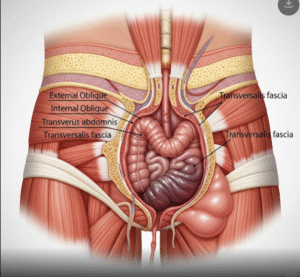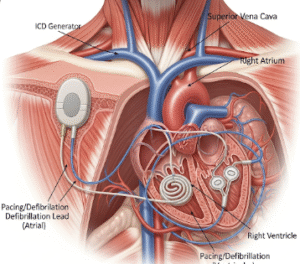Overview
Intermittent claudication is a pain or cramping in the legs that occurs during walking or exercise and is relieved by rest. This condition is primarily caused by peripheral artery disease (PAD), where the arteries supplying blood to the limbs are narrowed or blocked. Intermittent claudication is often an early warning sign of cardiovascular disease and may indicate an increased risk of heart attack or stroke if left untreated.
In Korea, awareness of intermittent claudication has grown significantly, with advanced diagnostic tools and treatments available in leading hospitals. Early detection and management are essential to prevent progression and maintain mobility and quality of life.
Key Facts
- ➔ Intermittent claudication causes leg pain, cramping, or fatigue during physical activity.
- ➔ The pain typically improves with rest, often within 5–10 minutes.
- ➔ Most commonly affects the calves, but can also involve the thighs or buttocks.
- ➔ It is a symptom of peripheral artery disease (PAD), usually caused by atherosclerosis.
- ➔ Risk factors include smoking, diabetes, high blood pressure, high cholesterol, and advanced age.
What is Intermittent Claudication?
Intermittent claudication is a symptom of reduced blood flow to the muscles of the legs during activity. The muscles need more oxygen during exertion, but narrowed arteries cannot deliver sufficient blood, resulting in pain, heaviness, or fatigue. Once the activity stops and the muscles’ oxygen demand decreases, the pain typically subsides.
- ➔ Mild intermittent claudication: Pain occurs only after long walks or significant exertion.
- ➔ Moderate intermittent claudication: Pain occurs after short distances, limiting daily activities.
- ➔ Severe intermittent claudication: Pain can appear even during minimal activity or at rest, signaling critical limb ischemia.
What Symptoms Are Related To
Intermittent claudication rarely occurs alone and may be associated with other signs of circulatory or vascular problems:
- ➔ Weakness or numbness in the legs
- ➔ Coldness or paleness in the affected limb
- ➔ Slow-healing wounds or ulcers on the feet or toes
- ➔ Hair loss or thinning on the legs
- ➔ Changes in skin color, including bluish or mottled patches
- ➔ Weak pulse in the legs or feet
Recognizing these related symptoms is important for early intervention and preventing complications.
What Causes / Possible Causes
The primary cause of intermittent claudication is peripheral artery disease (PAD), where plaque buildup narrows or blocks the arteries in the legs. Contributing factors include:
- ➔ Atherosclerosis: Fatty deposits reduce blood flow to leg muscles.
- ➔ Diabetes: Increases risk of PAD due to vascular damage.
- ➔ Smoking: Damages blood vessels and accelerates plaque buildup.
- ➔ High blood pressure and cholesterol: Contribute to arterial narrowing.
- ➔ Age and family history: Older adults and individuals with a family history of vascular disease are at higher risk.
In rare cases, intermittent claudication can result from spinal stenosis or nerve compression, but these cases are distinguished from PAD by diagnostic tests.
When Should I See My Doctor
It is crucial to consult a doctor if you experience:
- ➔ Leg pain or cramps during walking or exercise that consistently improves with rest
- ➔ Pain occurring at shorter distances over time
- ➔ Numbness, weakness, or coldness in the legs
- ➔ Slow-healing sores or wounds on the legs or feet
- ➔ Any signs of heart or circulatory disease, as PAD may indicate broader vascular problems
Early evaluation helps prevent complications such as critical limb ischemia, infection, or the need for surgical intervention.
Care and Treatment
Management of intermittent claudication focuses on relieving symptoms, improving circulation, and addressing underlying causes:
- ➔ Lifestyle modifications: Smoking cessation, regular walking programs, and healthy diet.
- ➔ Exercise therapy: Structured walking routines improve collateral circulation and reduce pain.
- ➔ Medications: Blood thinners, cholesterol-lowering drugs, and medications to improve blood flow.
- ➔ Foot care: Monitoring and treating wounds promptly to prevent infection.
- ➔ Control of underlying conditions: Managing diabetes, hypertension, and cholesterol is essential.
- ➔ Monitoring symptoms: Keeping track of walking distances before pain starts helps guide treatment.
Treatment Options in Korea
Korea offers a range of advanced treatments for intermittent claudication, especially in hospitals specializing in vascular medicine and cardiology:
- ➔ Non-invasive diagnostics: Ankle-brachial index (ABI), Doppler ultrasound, and CT or MR angiography.
- ➔ Medication management: Anti-platelet therapy, statins, and vasodilators to improve blood flow.
- ➔ Angioplasty and stenting: Minimally invasive procedures to open narrowed arteries.
- ➔ Bypass surgery: For severe cases, surgical grafting can restore blood flow.
- ➔ Supervised exercise programs: Clinically guided walking and physical therapy to enhance mobility.
- ➔ Long-term monitoring: Regular check-ups to prevent progression of PAD and associated cardiovascular risks.
Leading Korean hospitals such as Seoul National University Hospital, Asan Medical Center, and Samsung Medical Center provide comprehensive care for intermittent claudication, including multidisciplinary teams for vascular, cardiology, and rehabilitation services.
In Summary: Intermittent claudication is a key symptom of peripheral artery disease and a warning sign for broader cardiovascular issues. Recognizing the symptom early, addressing risk factors, and seeking specialized care in Korea can improve mobility, prevent complications, and enhance quality of life.
- ➔ Key Takeaway: Pain in the legs during walking should never be ignored, as it may indicate serious vascular disease.
- ➔ Action Point: Consult a physician promptly for assessment, diagnosis, and tailored treatment options.













